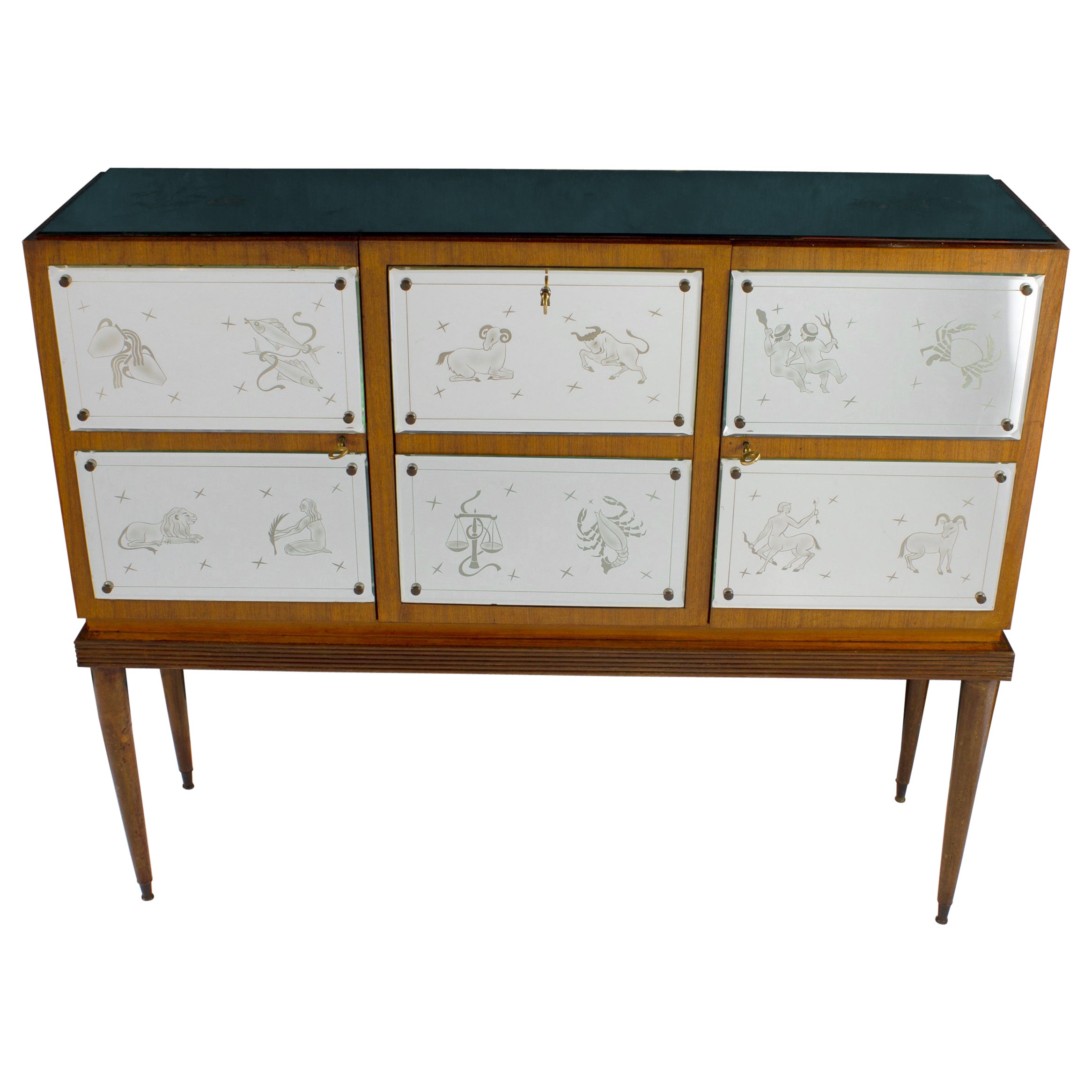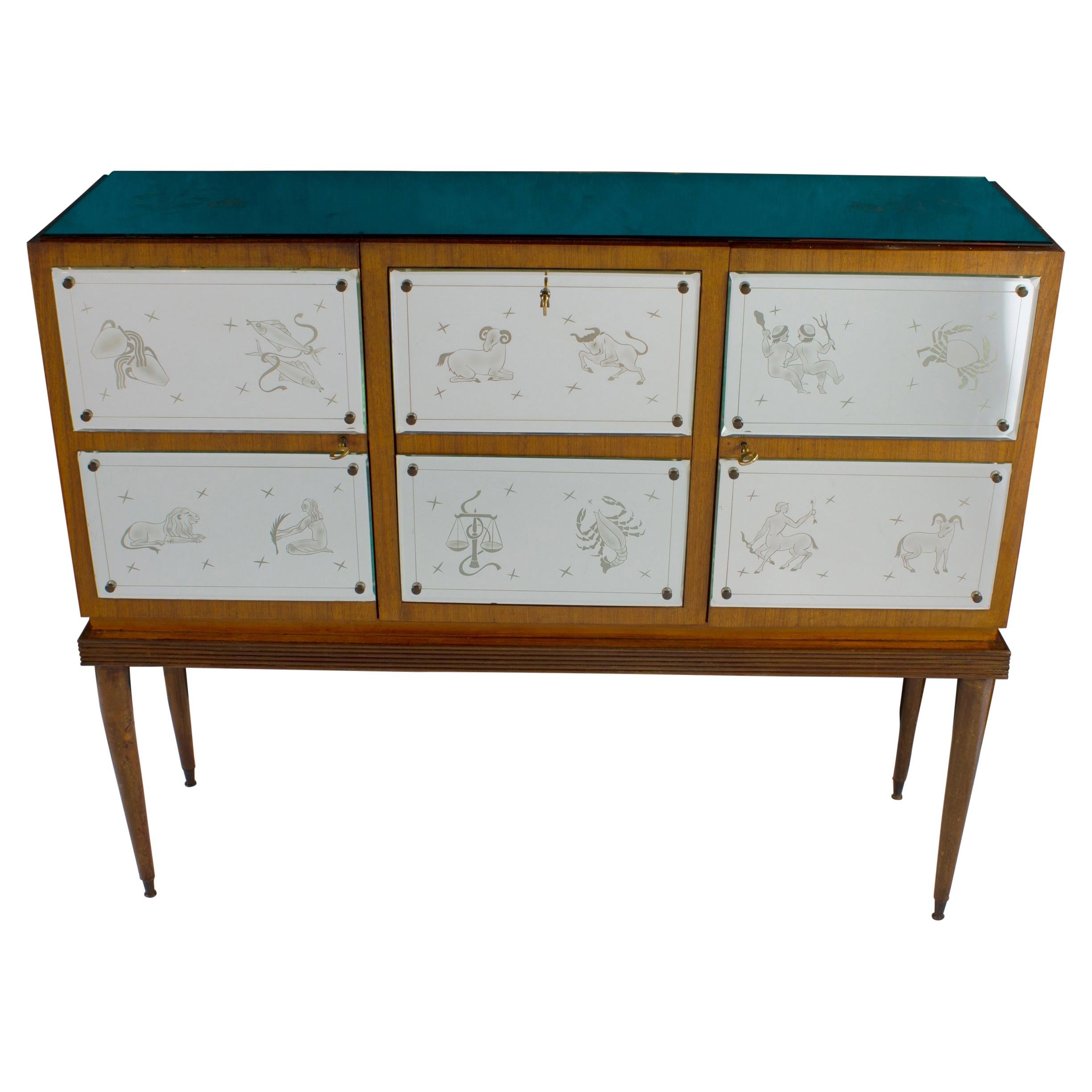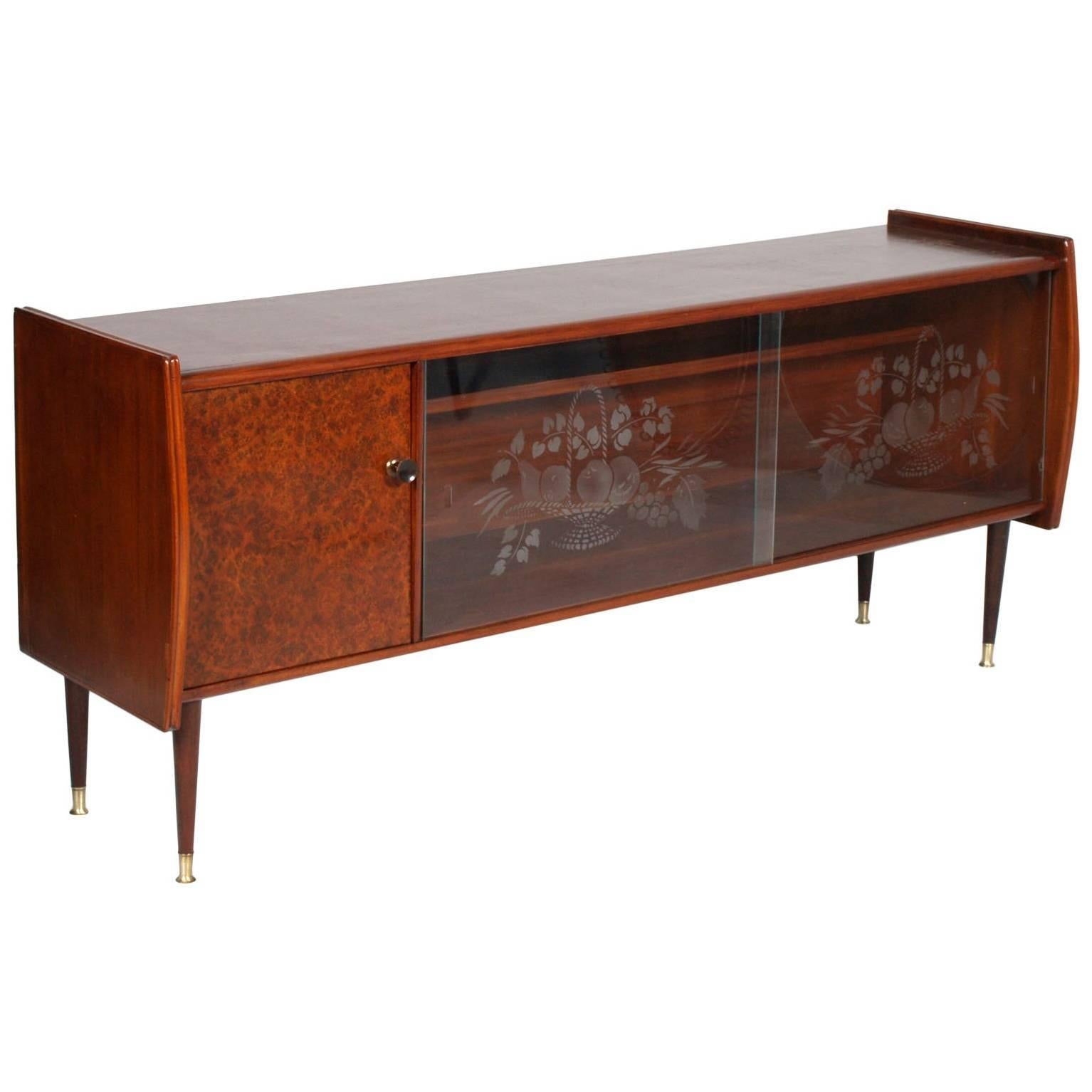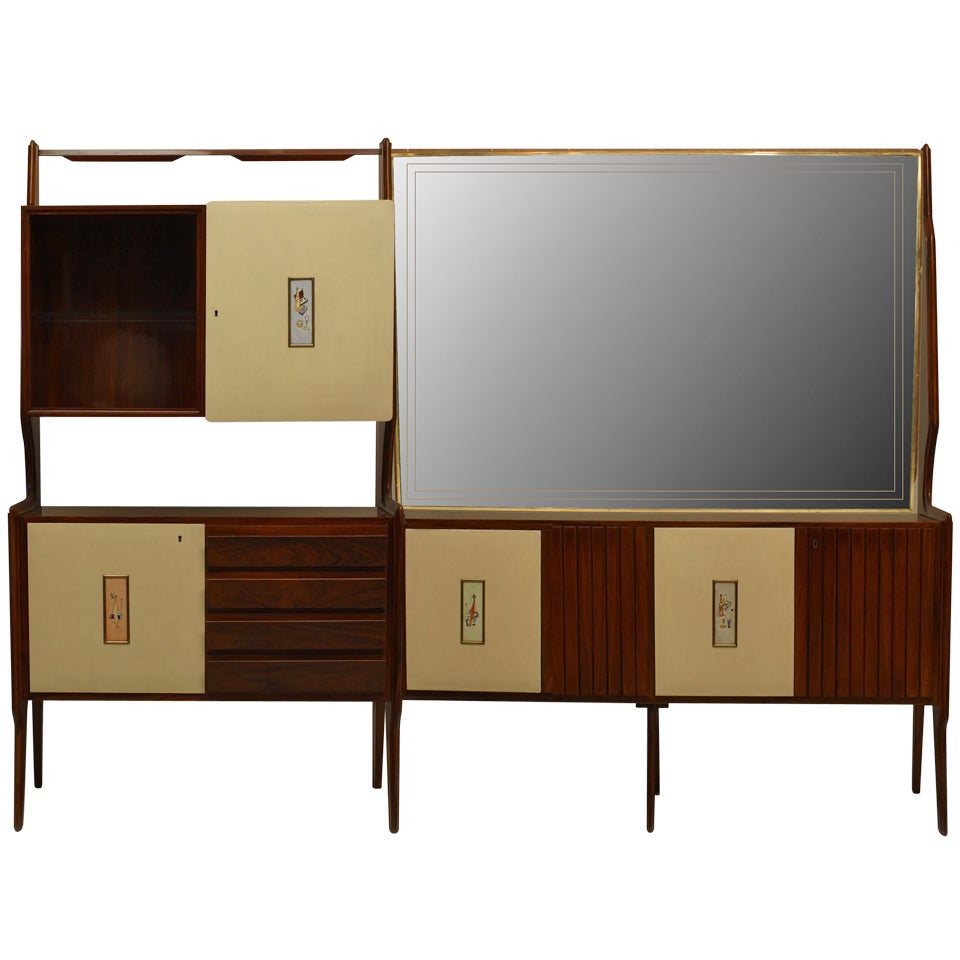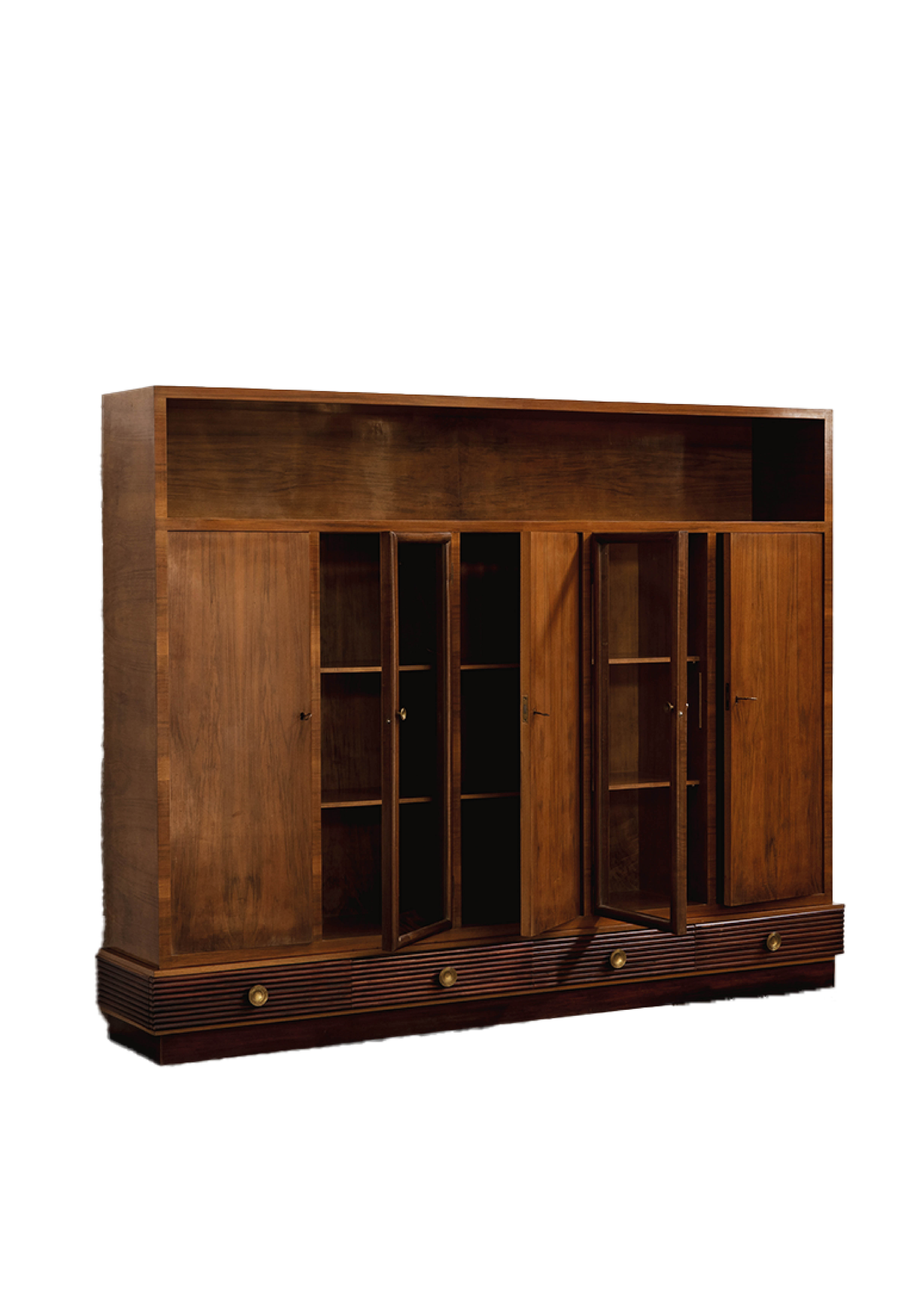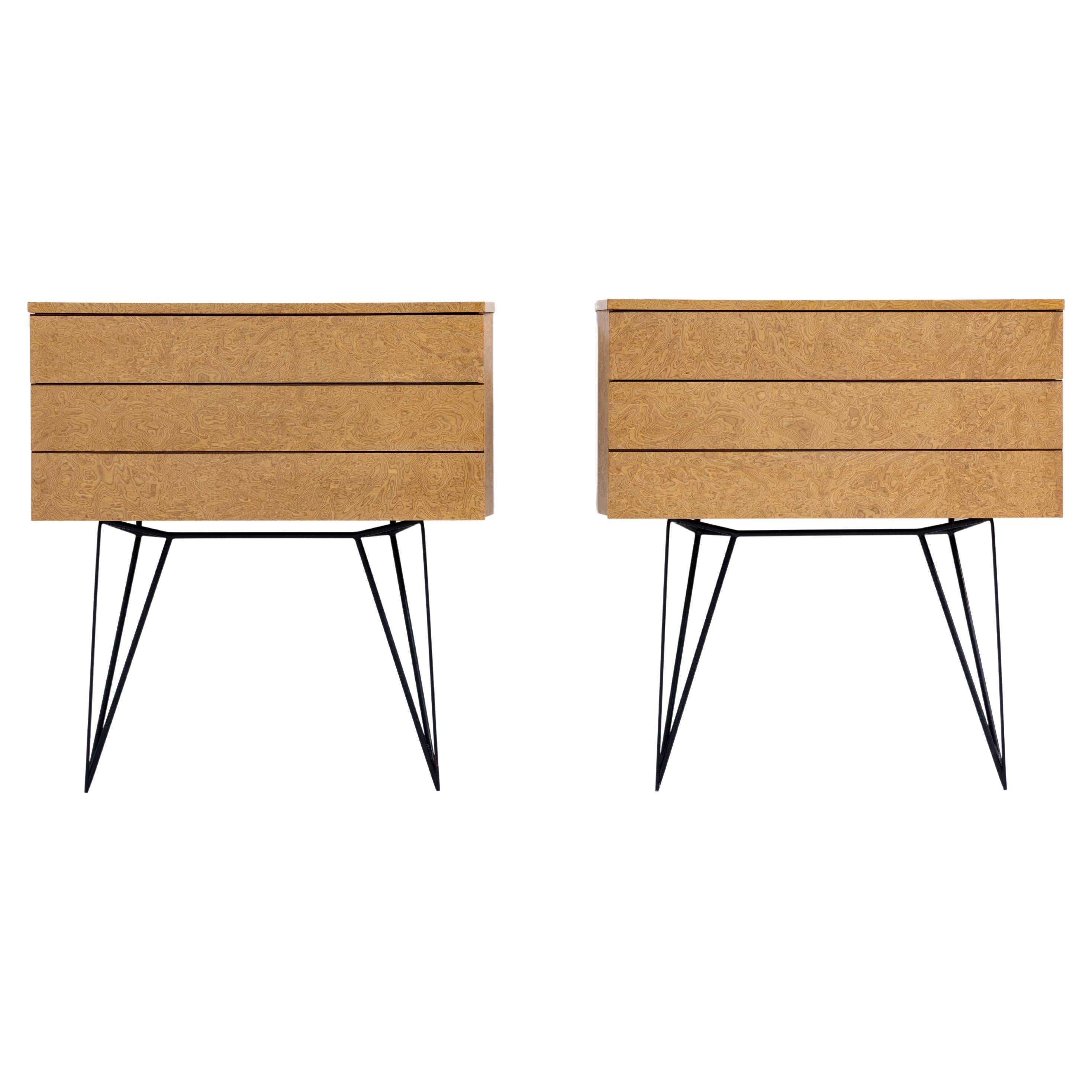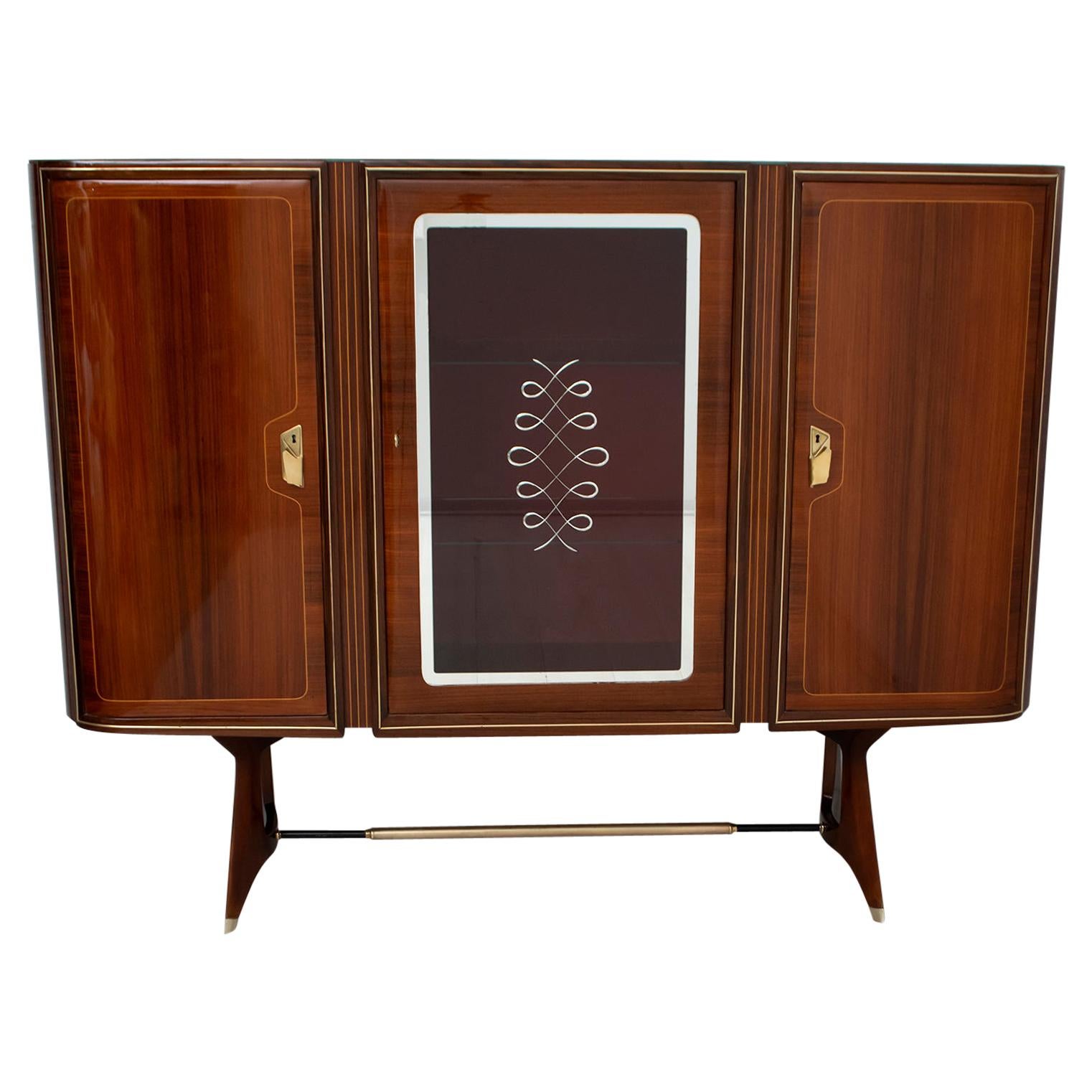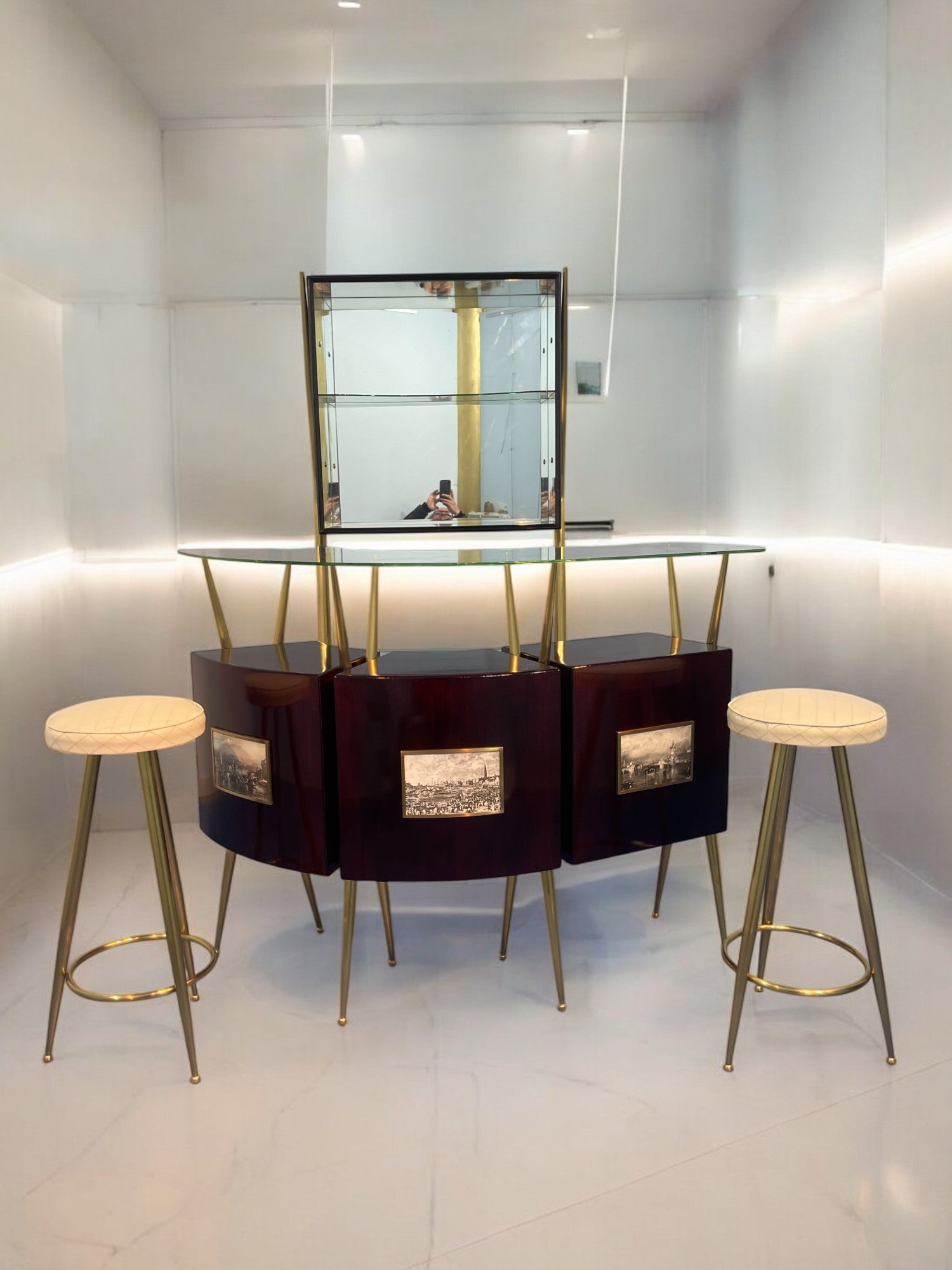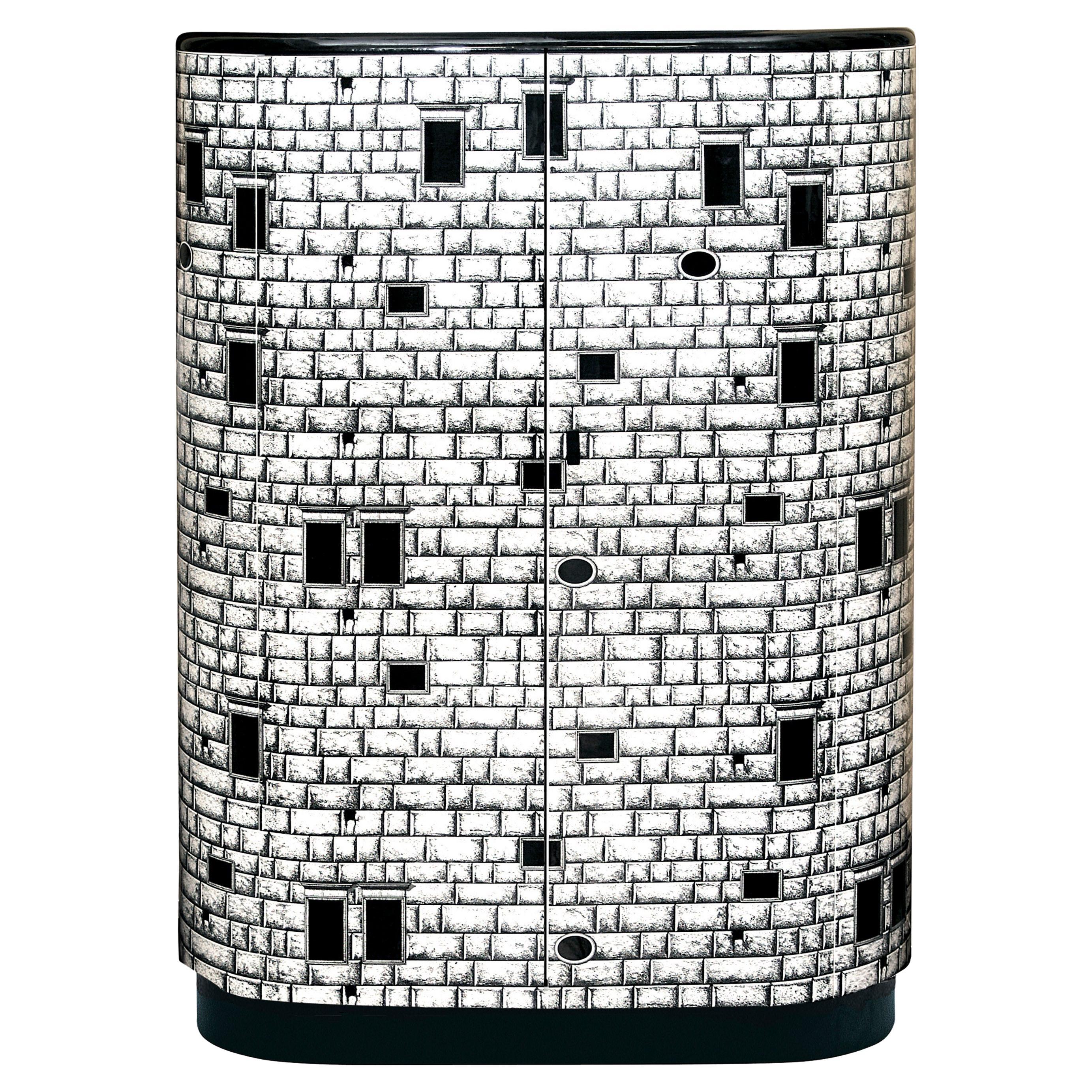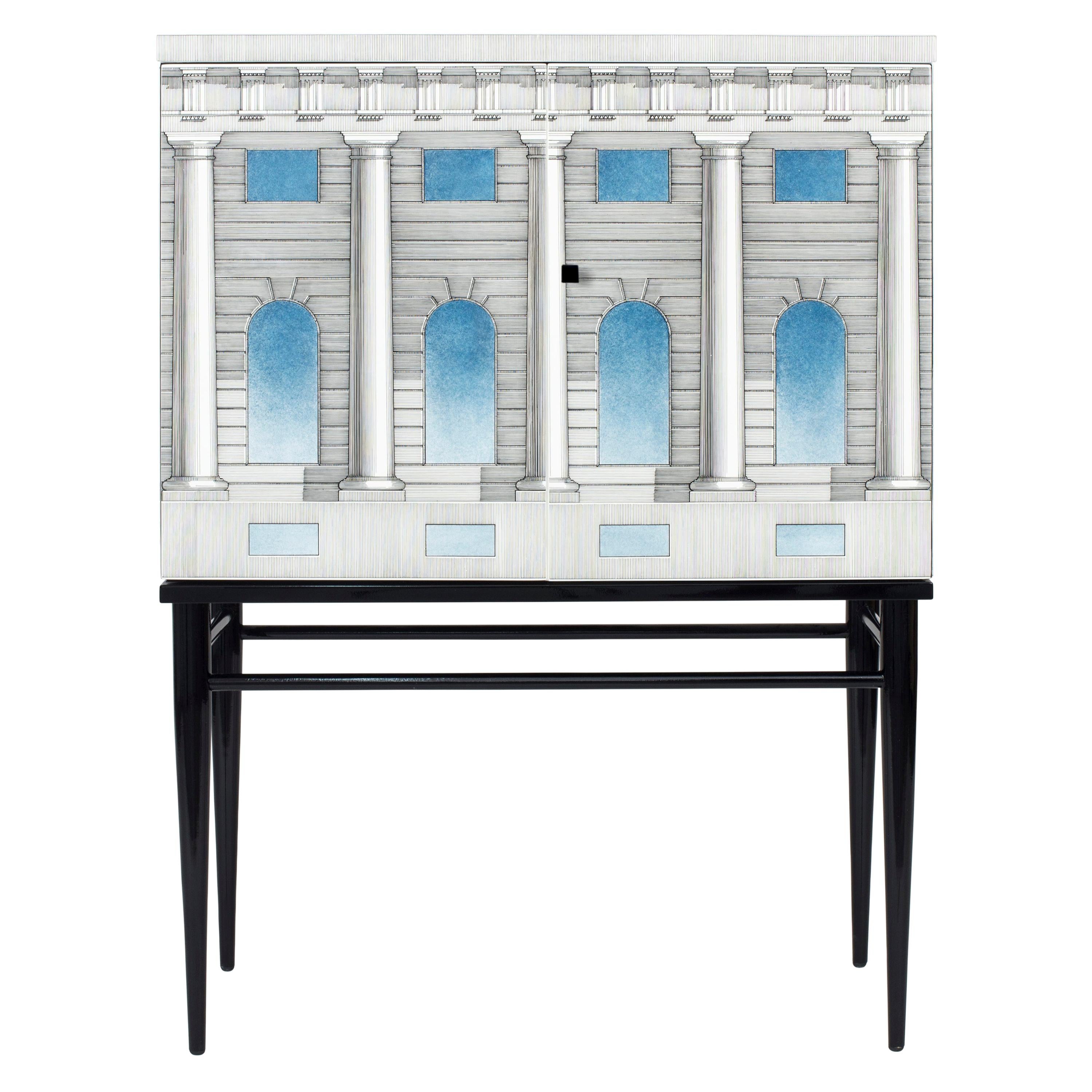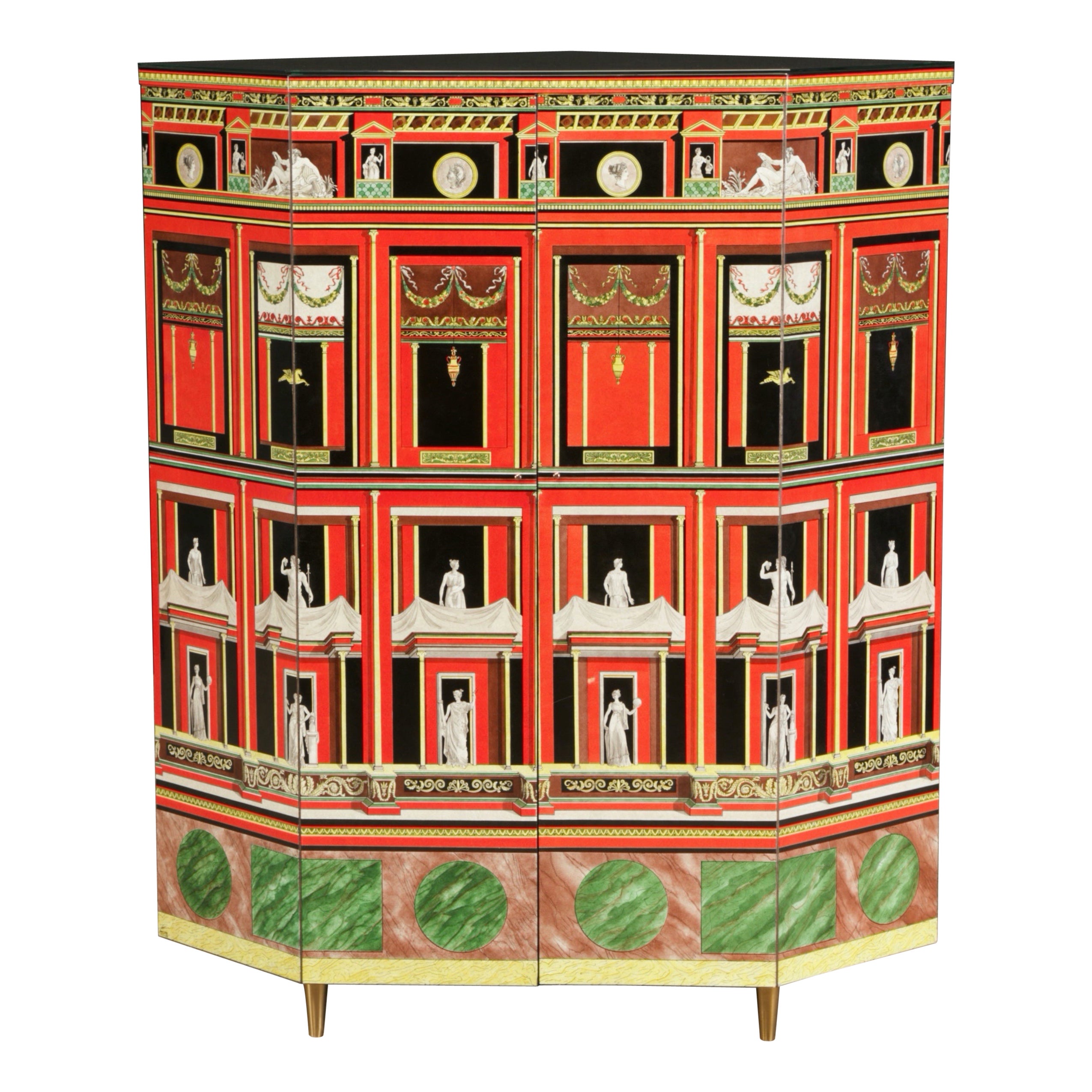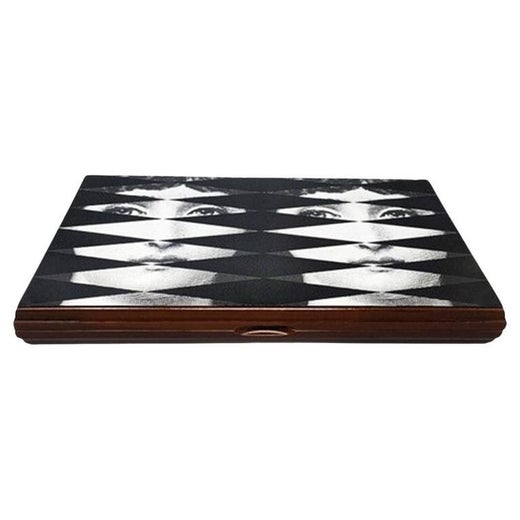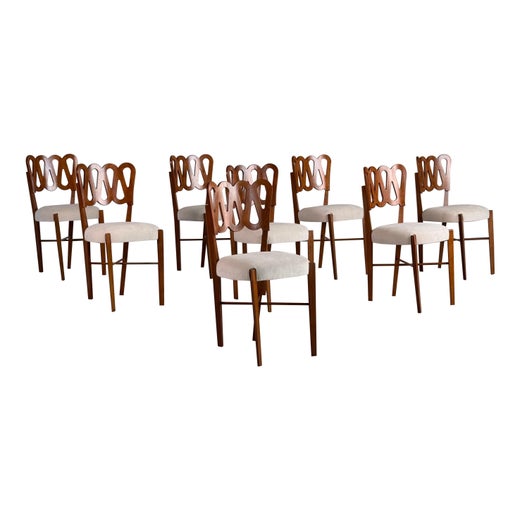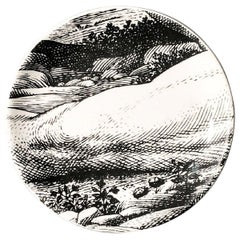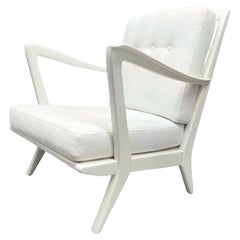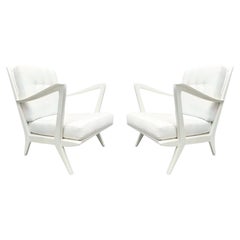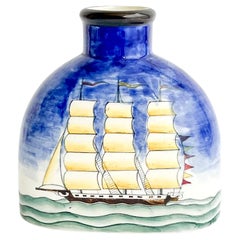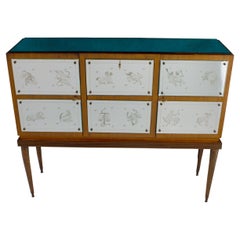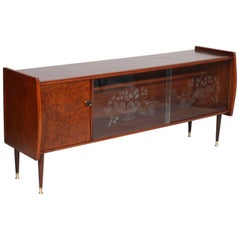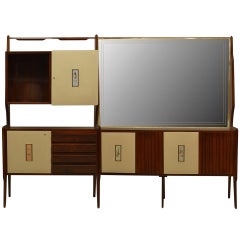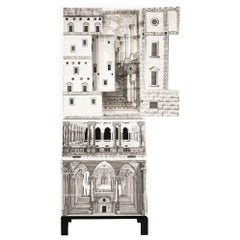
Piero Fornasetti Gio Ponti Architettura Trumeau Secretary Bookcase Cabinet, 1951
View Similar Items
Piero Fornasetti Gio Ponti Architettura Trumeau Secretary Bookcase Cabinet, 1951
About the Item
- Creator:Piero Fornasetti (Designer),Gio Ponti (Designer)
- Dimensions:Height: 86 in (218.44 cm)Width: 31.5 in (80.01 cm)Depth: 16.5 in (41.91 cm)
- Style:Mid-Century Modern (Of the Period)
- Materials and Techniques:
- Place of Origin:
- Period:
- Date of Manufacture:1951
- Condition:Wear consistent with age and use. Minor fading.
- Seller Location:Brooklyn, NY
- Reference Number:1stDibs: LU4190316456801
Piero Fornasetti
The Italian artist and designer Piero Fornasetti was one of the wittiest and most imaginative talents of the 20th century. He crafted an inimitable decorative style from a personal vocabulary of images that included birds, butterflies, hot-air balloons, architecture and — most frequently, and in some 500 variations — an enigmatic woman’s face based on that of Cavalieri. Fornasetti used transfer prints of these images, rendered in the style of engravings, to decorate an endless variety of furnishings and housewares that ranged from chairs, tables and decorative objects to dinner plates, table lamps and umbrella stands. His work is archly clever, often Surrealist and always fun.
Fornasetti was born in Milan, the son of an accountant, and he lived his entire life in the city. He showed artistic talent as a child and enrolled at Milan’s Brera Academy of Fine Art in 1930, but was expelled after two years for consistently failing to follow his professors’ orders.
A group of Fornasetti's hand-painted silk scarves, displayed in the 1933 Triennale di Milano, caught the eye of the architect and designer Gio Ponti, who, in the 1940s, became the artist's collaborator and patron. Beginning in the early 1950s, they created a striking series of desks, bureaus and secretaries that pair Ponti’s signature angular forms with Fornasetti’s decorative motifs — lighthearted arrangements of flowers and birds on some pieces, austere architectural imagery on others. The two worked together on numerous commissions for interiors, though their greatest project has been lost: the first-class lounges and restaurants of the luxury ocean liner Andrea Doria, which sank in 1956.
Fornasetti furnishings occupy an unusual and compelling niche in the decorative arts: they are odd yet pack a serious punch. They act, essentially, as functional sculpture. A large Fornasetti piece such as a cabinet or a desk can change the character of an entire room; his smaller works have the aesthetic power of a vase of flowers, providing a bright and alluring decorative note. The chimerical, fish-nor-fowl nature of Fornasetti’s work may be its greatest strength. It stands on its own. Bringing the Fornasetti look into the future is Barnaba Fornasetti, who took the reins of the company after his father's death.
Find vintage Piero Fornasetti dinner plates, chairs, tables and other furniture on 1stDibs.
Gio Ponti
An architect, furniture and industrial designer and editor, Gio Ponti was arguably the most influential figure in 20th-century Italian modernism.
Ponti designed thousands of furnishings and products — from cabinets, mirrors and chairs to ceramics and coffeemakers — and his buildings, including the brawny Pirelli Tower (1956) in his native Milan, and the castle-like Denver Art Museum (1971), were erected in 14 countries. Through Domus, the magazine he founded in 1928, Ponti brought attention to virtually every significant movement and creator in the spheres of modern art and design.
The questing intelligence Ponti brought to Domus is reflected in his work: as protean as he was prolific, Ponti’s style can’t be pegged to a specific genre.
In the 1920s, as artistic director for the Tuscan porcelain maker Richard Ginori, he fused old and new; his ceramic forms were modern, but decorated with motifs from Roman antiquity. In pre-war Italy, modernist design was encouraged, and after the conflict, Ponti — along with designers such as Carlo Mollino, Franco Albini, Marco Zanuso — found a receptive audience for their novel, idiosyncratic work. Ponti’s typical furniture forms from the period, such as the wedge-shaped Distex chair, are simple, gently angular, and colorful; equally elegant and functional. In the 1960s and ’70s, Ponti’s style evolved again as he explored biomorphic shapes, and embraced the expressive, experimental designs of Ettore Sottsass Jr., Joe Colombo and others.
Ponti's signature furniture piece — the one by which he is represented in the collections of the Museum of Modern Art in New York, Germany’s Vitra Design Museum and elsewhere — is the sleek Superleggera chair, produced by Cassina starting in 1957. (The name translates as “superlightweight” — advertisements featured a model lifting it with one finger.)
Ponti had a playful side, best shown in a collaboration he began in the late 1940s with the graphic artist Piero Fornasetti. Ponti furnishings were decorated with bright finishes and Fornasetti's whimsical lithographic transfer prints of things such as butterflies, birds or flowers; the Montreal Museum of Fine Arts possesses a 1950 secretary from their Architetturra series, which feature case pieces covered in images of building interiors and facades. The grandest project Ponti and Fornasetti undertook, however, lies on the floor of the Atlantic Ocean: the interiors of the luxury liner Andrea Doria, which sank in 1956.
Widely praised retrospectives at the Queens Museum of Art in 2001 and at the Design Museum London in 2002 sparked a renewed interest in Ponti among modern design aficionados. (Marco Romanelli’s monograph, which was written for the London show, offers a fine overview of Ponti’s work.) Today, a wide array of Ponti’s designs are snapped up by savvy collectors who want to give their homes a touch of Italian panache and effortless chic.
Find a range of vintage Gio Ponti desks, dining chairs, coffee tables and other furniture on 1stDibs.
More From This Seller
View AllMid-20th Century Italian Mid-Century Modern Barware
Porcelain
Mid-20th Century Italian Mid-Century Modern Armchairs
Textile, Walnut
Mid-20th Century Italian Mid-Century Modern Armchairs
Textile, Walnut
Early 20th Century Italian Art Deco Vases
Porcelain
Late 20th Century American Mid-Century Modern Cabinets
Plastic, Acrylic
Late 20th Century Danish Scandinavian Modern Cabinets
Wood
You May Also Like
Mid-20th Century European Mid-Century Modern Dry Bars
Art Glass
Mid-20th Century European Mid-Century Modern Dry Bars
Art Glass
Mid-20th Century Italian Art Deco Cabinets
Brass
Vintage 1950s Italian Mid-Century Modern Buffets
Rosewood, Mahogany, Mirror, Lacquer
Vintage 1940s Italian Mid-Century Modern Cabinets
Wood
Vintage 1970s Italian Modern Dry Bars
Glass, Lacquer
Recently Viewed
View AllRead More
How the Anglepoise Lamp Went from Desktop Companion to Hollywood Icon
Since its 1934 debut, the ingenious task light has become one of the most celebrated examples of industrial design.
Billy Cotton Layers His Interiors with Lived-In Comfort
The Brooklyn-based designer is adept at styles ranging from austere to over-the-top, espousing an architectural, detail-oriented approach also evident in his line of furniture and lighting.
